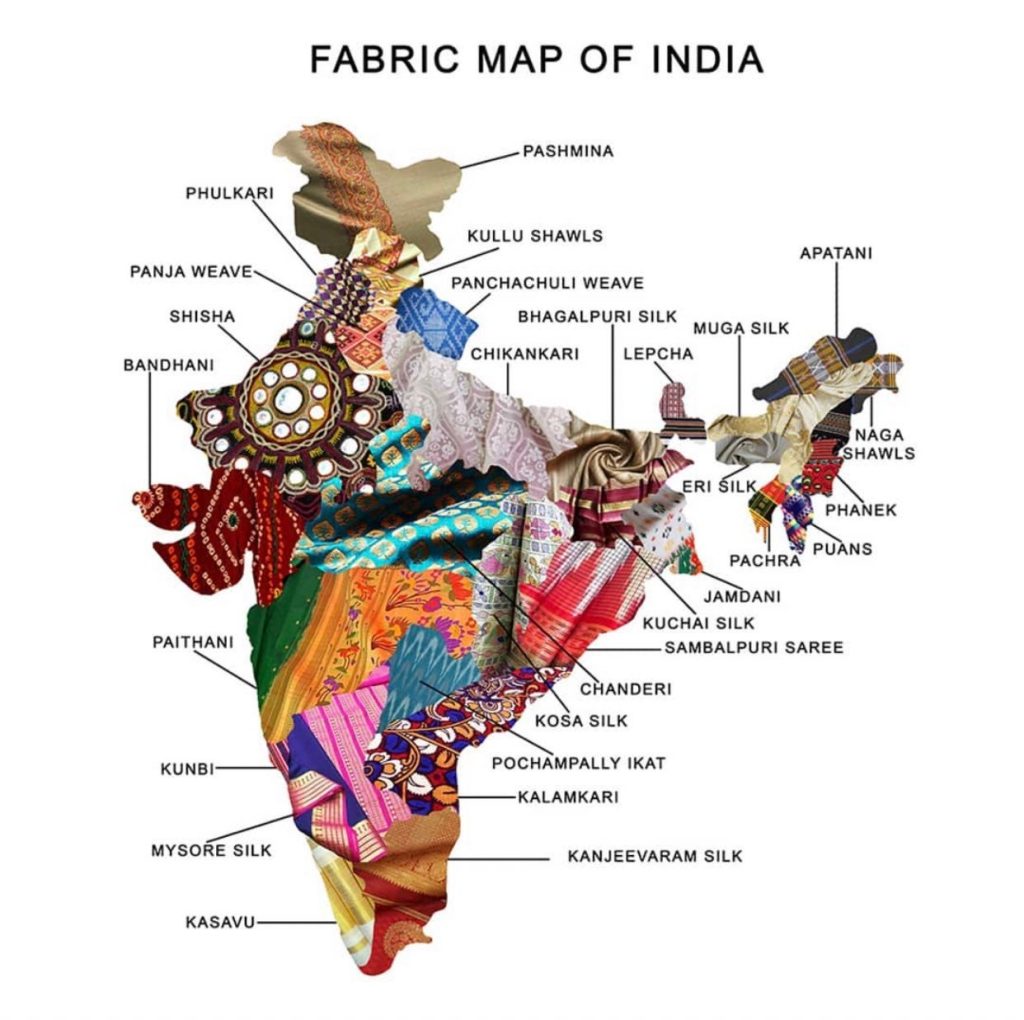Context:
An application seeking Geographical Indication (GI) tag for the Arunachal Pradesh Apatani textile product has been filed by a firm.
Relevance:
Prelims, GS-I: Art and Culture, GS-III: Intellectual Property Rights
Dimensions of the Article:
- Apatani Textile
- Geographical indication in textile industry
- GI Tag
- Geographical Indications Registry (GIR)
Apatani Textile
- The Apatani weave comes from the Apatani tribe of Arunachal Pradesh living at Ziro, the headquarters of lower Subansiri district.
- Aaptani are a tribal group of people living in the Ziro valley in Arunachal Pradesh. They speak a local language called Tani and worship the sun and the moon.
- The Apatani community weaves its own textiles for various occasions, including rituals and cultural festivals and only women folk are engaged in weaving.
- The woven fabric of this tribe is known for its geometric and zigzag patterns and also for its angular designs.
- The tribe predominantly weaves shawls known as jig-jiro and jilan or jackets called supuntarii.
- The people here use different leaves and plant resources for organic dying the cotton yarns in their traditional ways.
Geographical indication in textile industry
- GI proved to be a significant aspect when it comes to the Indian textile industry. With the changing economic structure of the world, the textile industry has also been affected and came into the limelight.
- Continuous evolving and expansion of business across the globe has made it necessary for the textile market/industry to protect its indigenous identity & to safeguard from infringers and/or false users taking advantage of the local and ancient weavers who have been working in maintaining the heritage and rich culture of Indian textile and handloom crafts.
- Being an important sector to flourish the Indian economy, the Textile and handloom industry needs significant protection both in domestic and international markets.
- Some of the examples of textile GI in India are Pochampalli saree from Andhra Pradesh, Mysore Silk from Karnataka, Muga Silk from Assam, Kanjeevaram Sarees from Tamil Nadu, Paithani Saree & Fabrics from Maharashtra, Orissa Ikat from Odisha, Chanderi Sari from Madhya Pradesh, Bhagalpur Silk from Bihar, Banarasi Sarees & Brocades from Uttar Pradesh, Phulkari from Punjab, Kullu Shawl from Himachal Pradesh, Kashmir Pashmina from Jammu & Kashmir.
- Arani Silk, Kovai Cora Cotton, Salem Silk from Tamil Nadu, Molakalmuru Saree, Navalgund Durries from Karnataka, Nakshi Kantha, Solapur Terry Towel & Chaddar from Maharashtra are some of the latest GIs in the textile industry.

GI Tag
- A geographical indication (GI) is a name or sign used on certain products which corresponds to a specific geographical location or origin (e.g., a town, region, or country).
- India, as a member of the World Trade Organization (WTO), enacted the Geographical Indications of Goods (Registration and Protection) Act, 1999 has come into force with effect from 15 September 2003.
- GIs have been defined under Article 22 (1) of the WTO Agreement on Trade-Related Aspects of Intellectual Property Rights (TRIPS) Agreement as: “Indications which identify a good as originating in the territory of a member, or a region or a locality in that territory, where a given quality, reputation or characteristic of the good is essentially attributable to its geographic origin.”
- The GI tag ensures that none other than those registered as authorised users (or at least those residing inside the geographic territory) are allowed to use the popular product name.
- Darjeeling tea became the first GI tagged product in India, in 2004–2005.
- GI protection systems restrict the use of the GIs for the purpose of identifying a particular type of product, unless the product and/or its constituent materials and/or its fabrication method originate from a particular area and/or meet certain standards.
- Sometimes these laws also stipulate that the product must meet certain quality tests that are administered by an association that owns the exclusive right to license or allow the use of the indication.
Geographical Indications Registry (GIR)
- As per the Geographical Indication of Goods (Registration and Protection) Act, 1999, association of persons or producers can apply for GIs for specific products supported by required documents.
- The Controller General of Patents, Designs & Trade Marks (CGPDT), (under the Dept. of Industrial Policy and Promotion of Ministry of Commerce and Industry) is the ‘Registrar of Geographical indications’.
- The CGPDT directs and supervises the functioning of the Geographical Indications Registry (GIR).
-Source: The Hindu





